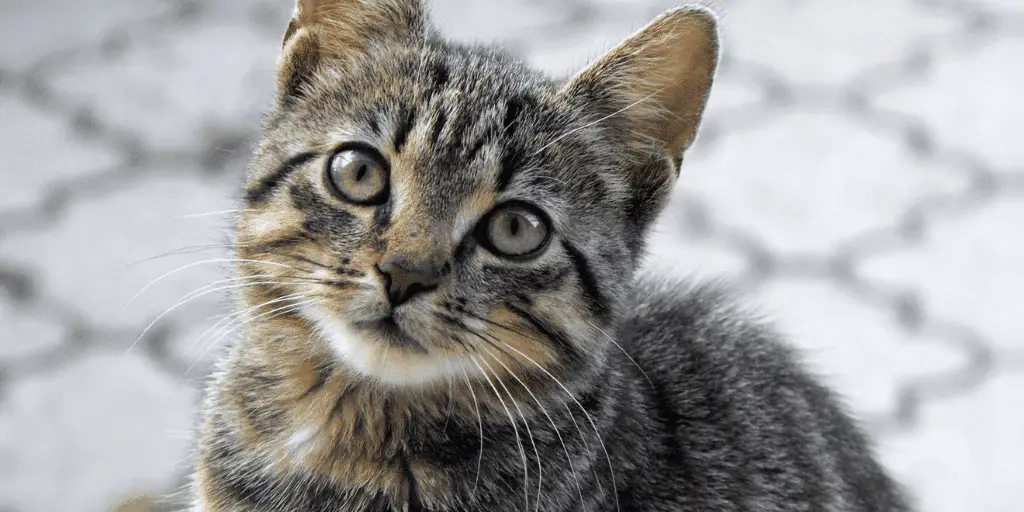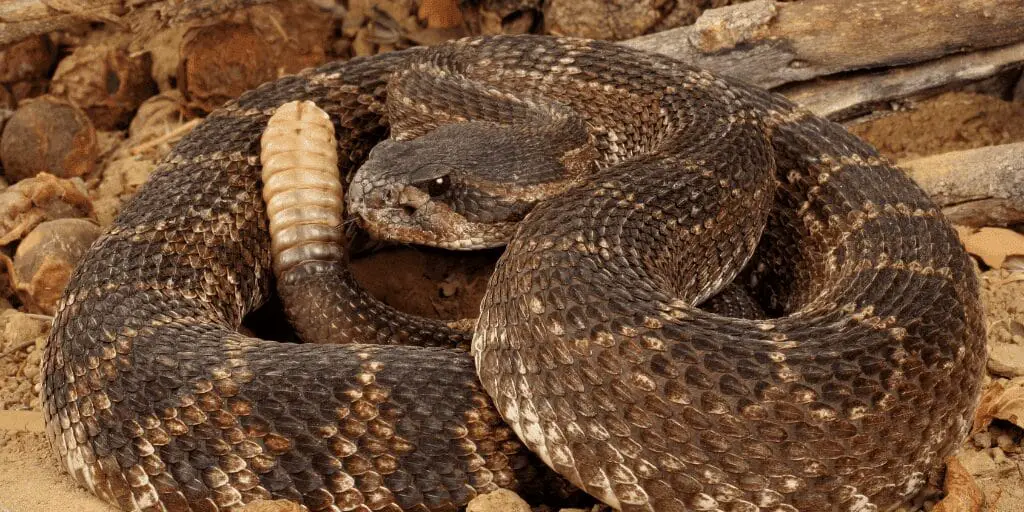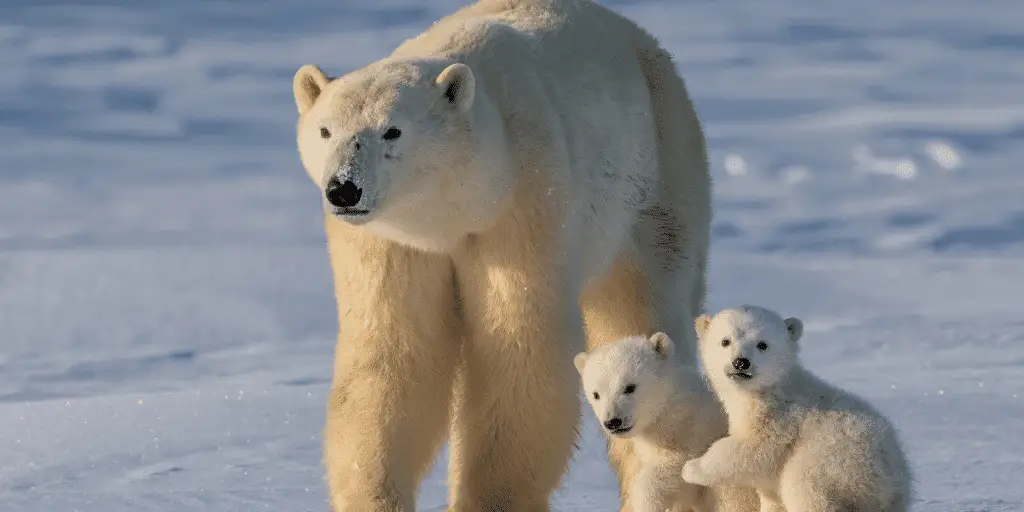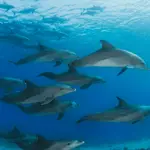Curious about the animal kingdom’s top-notch groomers? From feline self-cleaning rituals to the meticulous habits of ants, cleanliness is more than a trait—it’s a survival strategy. Discover the unexpected hygiene heroes and the fascinating behaviors that keep them pristine.
Key Takeaways:
- Cats are renowned for their self-cleaning habits, using their barbed tongues to groom their fur, which not only keeps them clean but also spreads natural oils for protection and sheen. Regular grooming is a health indicator and has psychological benefits, including stress relief and social bonding through allogrooming.
- Hamsters are diligent groomers, using their paws and teeth to keep their fur clean and free of parasites, which is vital for their health. They also enjoy sand baths to absorb excess oils and eliminate parasites, and pet owners should provide these to support their natural grooming behaviors and overall well-being.
- Rattlesnakes undergo a shedding process called ecdysis, where they remove their old skin along with parasites, which is essential for their health. Frequent and complete sheds are indicative of good health, and understanding this process is important for reptile enthusiasts to ensure the well-being of pet snakes.
- Rabbits meticulously groom themselves and each other, which is important for their health, preventing fur matting and ingestion, and allowing for early detection of health issues. Pet owners can support their grooming needs with safe aids and a fiber-rich diet to prevent hairballs and maintain a healthy digestive system.
- Pigs are often mischaracterized as dirty, but in reality, they are clean animals that distinguish between their living and bathroom areas. Mud baths are a practical way for pigs to cool down and protect against parasites, not a preference for filth. Proper care and environment that cater to their cleanliness can improve their welfare.
What Are the Cleanest Animals on Earth?
Quick Answer: The cleanest animals include cats, hamsters, rattlesnakes, rabbits, pigs, polar bears, ants, dolphins, tigers, naked mole rats, bees, giraffes, squirrels, elephants, and otters, each with unique grooming habits.
| Animal | Grooming Habits | Health and Social Benefits | Unique Adaptations |
| Cats | Use barbed tongues to groom fur, spreading natural oils. | Enhances coat sheen, stress relief, social bonding through allogrooming. | Barbed tongues for effective grooming; grooming indicates health. |
| Hamsters | Use paws and teeth for grooming, enjoy sand baths. | Keeps fur clean, reduces parasites, supports well-being. | Preference for sand baths to maintain fur cleanliness. |
| Rattlesnakes | Undergo shedding (ecdysis) to remove old skin and parasites. | Indicates good health, essential for removing parasites. | Shedding process crucial for health and cleanliness. |
| Rabbits | Self-groom and perform allogrooming, require fiber-rich diet. | Prevents fur matting, early detection of health issues, prevents hairballs. | Meticulous grooming to prevent fur ingestion and matting. |
| Pigs | Distinguish living/bathroom areas, take mud baths for cooling and parasite protection. | Mud baths for cooling and protection, not preference for filth. | Mischaracterized as dirty; actually have hygiene preferences. |
| Polar Bears | Roll in snow, wash off after meals, for insulation and buoyancy. | Keeps fur clean for insulation and hunting efficiency. | Grooming essential for maintaining insulation in Arctic conditions. |
| Ants | Engage in personal and communal nest cleaning, remove debris and dead. | Prevents disease spread, crucial for colony health. | Sophisticated sanitation systems for communal living. |
| Dolphins | Perform skin sloughing by rubbing against surfaces for parasite removal. | Maintains hydrodynamic efficiency, strengthens social bonds. | Grooming practices for health and social interaction in aquatic environments. |
| Tigers | Lick fur and use paws for cleaning, mothers groom cubs. | Keeps fur free of parasites, temperature regulation, social bonding. | Daily grooming rituals for health and social cues. |
| Naked Mole Rats | Engage in communal grooming for dirt removal, maintain clean tunnels. | Prevents disease, reinforces social hierarchy. | Communal grooming and cleanliness for subterranean living. |
| Bees | Remove debris and dead, use propolis for antifungal and antibacterial purposes. | Hive cleanliness prevents disease outbreaks. | Sophisticated hygiene practices for communal living and disease prevention. |
| Giraffes | Use long tongues for self-cleaning, mothers groom calves. | Prevents parasites, strengthens maternal bonds. | Long tongues and antiseptic saliva for grooming and wound healing. |
| Squirrels | Use paws and teeth for grooming, social grooming in communal nests. | Reduces stress, prevents skin diseases, controls disease transmission. | Agility in grooming to maintain fur health and social bonds. |
| Elephants | Engage in dust, mud, and water baths for skin care and cooling. | Essential for parasite control and temperature regulation. | Bathing rituals for skin care and social bonding in herds. |
| Otters | Use paws, mouths, and objects to comb and fluff fur for waterproofing. | Waterproof and buoyant fur crucial for aquatic life. | Social grooming for family bonding and demonstrating health to potential mates. |
1. Cats: The Self-Cleaning Experts

The Science Behind Feline Grooming
Cats are often admired for their meticulous grooming habits, which are rooted in their unique anatomy. The feline tongue is a marvel of nature, equipped with backward-facing barbs known as papillae. These tiny, hook-like structures function like a natural comb, expertly detangling fur, removing loose hair, and capturing dirt and parasites.
From the time they are kittens, cats are hardwired to groom themselves, a behavior that is both instinctual and essential for their hygiene. This frequent licking not only keeps their coat pristine but also spreads natural oils evenly, which enhances the fur’s sheen and provides a layer of protection.
Veterinary experts have observed that regular grooming can be a barometer for a cat’s health, with changes in grooming behavior often signaling underlying issues.
Behavioral Patterns and Health Benefits
Beyond the physical advantages, grooming holds significant psychological and social value for cats. It’s a soothing ritual that can alleviate stress and serve as a form of self-care. When cats engage in allogrooming, the act of grooming one another, it’s not just about cleanliness; it’s a way to forge and reinforce social bonds within a group.
This behavior is a sign of trust and affection, integral to the social structure of feline communities. Moreover, grooming is a cat’s first line of defense against skin infections and pest infestations, which can lead to more serious health problems if left unchecked.
By maintaining a clean coat, cats are less susceptible to diseases and can enjoy a higher quality of life. Drawing on authoritative sources, including recent studies and veterinary insights, it’s evident that the psychological benefits of cat grooming, along with its role in social interaction and health maintenance, are as multifaceted as the creatures themselves.
2. Hamsters: The Tiny Clean Freaks of the Animal Kingdom
Grooming Techniques of Hamsters
When it comes to personal hygiene, hamsters are the epitome of cleanliness in the animal kingdom. Despite their diminutive size, these furry little creatures are fastidious groomers, dedicating a significant portion of their day to keeping themselves spick and span. With meticulous strokes, hamsters use their paws to comb through their fur, ensuring every strand is in place.
Their teeth play a crucial role too, nibbling away at any dirt or debris that might be clinging to their coat. But it’s not just about looking good; these grooming sessions are vital for their health, helping to distribute natural oils and prevent skin irritations.
One of the most charming sights is watching a hamster enjoy a sand bath. Rolling and flipping in special fine sand, they are able to absorb excess oils and eliminate parasites that could otherwise cause them harm.
For hamster owners, it’s important to facilitate these natural habits by providing a sand bath in their habitat. This not only allows hamsters to engage in their instinctual grooming behaviors but also contributes significantly to their overall well-being and happiness.
Health Implications of Hamster Grooming
Regular grooming is more than just a vanity project for hamsters; it’s a critical component of their health. By keeping their fur clean and free of parasites, hamsters can avoid a host of skin diseases that could otherwise take a toll on their health.
Moreover, the act of grooming itself is a stress-reliever for these creatures, offering a sense of comfort and normalcy, especially in the confines of captivity.
Observant pet owners can support their furry friends by recognizing the signs of a hamster in need of a little extra help. While hamsters are adept at keeping themselves tidy, there are times when human intervention is necessary.
This might include trimming their nails to prevent overgrowth or providing a dust bath to help with coat maintenance. It’s a delicate balance, but by understanding and supporting their grooming needs, owners can ensure their hamsters not only look their best but are also at their healthiest. With the right care, these tiny clean freaks can lead happy, hygienic lives.
3. Rattlesnakes: Shedding More Than Just Skin

The Shedding Process Explained
Imagine you’re a rattlesnake, living in the wild, growing, and constantly interacting with your environment. As you grow, your skin doesn’t grow with you. Instead, you go through a fascinating biological process called ecdysis, or more commonly known as shedding.
This isn’t just about outgrowing old skin; it’s a critical routine to maintain your health. During the rattlesnake shedding process, the old layer of skin peels away, taking with it parasites and other unwanted hitchhikers.
Young rattlers might shed their skin up to four times a year, while adults might do so once or twice, depending on factors like their growth rate and overall health. The snake will rub against rough surfaces, initiating the shed, which can be quite meticulous.
This act isn’t just a casual scratch; it’s a deliberate effort to remove the old and reveal a pristine, clean layer underneath. When you hear about the ecdysis in snakes, it’s a testament to their resilience and adaptability, ensuring they remain as healthy and clean as possible in their natural habitats.
Significance of Shedding for Rattlesnake Health
Shedding isn’t just a cosmetic change for rattlesnakes; it’s a vital part of their well-being. This process is essential for eliminating parasites that can latch onto their skin, preventing potential infections that could harm the snake. A successful shed is often a sign of good nutrition and a well-maintained habitat, which are crucial for a rattlesnake’s health.
For those who are passionate about reptiles and may even have a rattlesnake as a pet, understanding and managing shedding in reptiles is key to ensuring their health. Observing the frequency and quality of shedding can provide insights into the snake’s living conditions and dietary health.
Experts often correlate frequent and complete sheds with a snake’s robust health, while problematic shedding can signal underlying health issues. By maintaining a suitable environment and monitoring the signs of healthy shedding in snakes, reptile enthusiasts can play an active role in supporting their slithery companions’ cleanliness and well-being.
4. Rabbits: Masters of Self-Cleaning
Understanding Rabbit Grooming Behaviors
Rabbits are fastidious creatures, taking their grooming rituals very seriously. With their flexible spines and long tongues, they can reach most parts of their body to lick themselves clean, much like a cat.
Their paws also play a crucial role, acting as combs to help remove loose fur and dirt from their coats. But it’s not just about staying clean; grooming is a social activity for rabbits. This social grooming, or allogrooming, is where rabbits will clean each other, strengthening bonds and establishing hierarchy within their groups.
For pet rabbit owners, understanding these rabbit grooming habits is essential. It’s not just about providing a dust-free habitat, but also about respecting their need for social interaction, which can be facilitated by introducing another rabbit companion.
Health Benefits of Regular Grooming in Rabbits
Regular grooming is more than just a cleanliness ritual for rabbits; it’s a critical component of their overall health. By grooming themselves, rabbits prevent painful matting of the fur, reduce the risk of fur ingestion, and allow for early detection of lumps, bumps, or parasites that could indicate health issues.
During shedding season, grooming is particularly important to manage the excess fur, which, if ingested in large amounts, can lead to dangerous hairballs. To support their grooming needs, pet owners can provide safe grooming aids like ingestible hairball remedies and ensure a diet rich in fiber to promote a healthy digestive system. This not only helps in maintaining a sleek, shiny coat but also in preventing hairballs in rabbits.
5. Pigs: Debunking the Dirty Animal Myth
The Truth About Pig Cleanliness
When you think of pigs, you might picture them wallowing in mud, seemingly relishing in filth. But hold on, that’s not the whole story. In fact, pigs are quite clean creatures, especially in their natural habitats.
Wild pigs are known to be quite meticulous about their living spaces, choosing to rest in clean areas and making a clear distinction between their bathroom spots and their bedding. This behavior is a far cry from the dirty animal myth that has long been associated with them.
Mud baths, a behavior often misunderstood, are actually a pig’s clever way to cool down and protect themselves from parasites. It’s not about a love for muck, but a practical solution to their lack of sweat glands and a natural defense against bugs that want to bite.
By understanding these natural behaviors of pigs, we start to see them in a new light—as intelligent and hygienic animals that have been unfairly branded by pig cleanliness myths.
Implications for Pig Care and Welfare
Grasping the true nature of pig cleanliness has profound implications for their care. Whether on the farm or in a family’s backyard, creating an environment that caters to a pig’s preference for cleanliness is key.
This means providing them with ample space to roam, clean bedding to rest, and access to water for their essential mud baths. By doing so, we not only respect their hygiene needs but also elevate their overall welfare.
Acknowledging the environmental needs of pigs allows us to design better living conditions that mirror their natural habits. This understanding can lead to improved standards in pig welfare and hygiene, ensuring that these intelligent animals are treated with the care and respect they deserve.
When caring for pigs, it’s important to remember that their cleanliness is an integral part of their well-being, and our practices should reflect that.
6. Polar Bears: The Arctic’s Immaculate Inhabitants

Polar Bear Grooming: An Essential Survival Skill
Imagine a polar bear, the majestic creature of the Arctic, meticulously cleaning its fur. This isn’t just a matter of pride; it’s a critical survival technique. Polar bear grooming habits are fascinating, involving rolling in the snow and using water to wash off after a meal. Why do they do this? Well, it’s all about the insulation properties of polar bear fur.
Their thick underfur and longer guard hairs create a waterproof and insulating layer, essential for withstanding the bone-chilling temperatures of their habitat. Any debris or blood left in their fur from feeding could compromise this natural insulation.
By keeping their fur impeccably clean, polar bears ensure they stay warm and buoyant while swimming in the frigid Arctic waters.
This grooming ritual underscores the remarkable adaptations of these Arctic animal hygiene experts, enabling them to thrive in one of the harshest environments on Earth.
The Impact of Climate Change on Polar Bear Cleanliness
The pristine white coat of a polar bear isn’t just for show; it’s a vital part of their survival, offering both insulation and camouflage. However, climate change is throwing a wrench in the works. The loss of sea ice in the Arctic affects polar bears‘ ability to hunt seals, their primary food source, and maintain their cleanliness.
As the ice retreats, polar bears are forced to travel greater distances, which can lead to dirtier fur that’s less effective at keeping them warm and camouflaged from prey. The implications are serious: dirty fur can lead to a drop in body temperature, which can be life-threatening in the Arctic cold.
The effects of climate change on polar bears extend beyond just their hunting grounds; it’s a matter of hygiene and health. As the environment changes, so too must the behaviors of these animals. Understanding the environmental impacts on animal grooming is not just about the animals themselves—it’s a reflection of the health of our planet.
7. Ants: The Tiny Titans of Tidiness
Ant Cleanliness: More Than Just Instinct
Ants are the paragons of personal and communal cleanliness, and their meticulous habits are a marvel to behold. Each ant spends a significant part of its day grooming itself, meticulously cleaning its body with its mouthparts. This isn’t just about looking good; it’s a critical health measure.
By engaging in ant grooming behaviors, these tiny creatures remove harmful fungal spores and bacteria that could otherwise wreak havoc within the colony. But it doesn’t stop there. Nest hygiene in ants is a collective effort, with members of the colony working together to remove debris and the bodies of deceased comrades, ensuring their home remains pristine.
This isn’t just busywork; it’s a sophisticated system of sanitation that showcases the complex social structures of ants and their unwavering commitment to the collective health of their community. Social insects and disease prevention go hand in hand, and ants are the exemplars of this relationship.
The Role of Cleanliness in Ant Colony Success
Cleanliness is not just a virtue for ants; it’s a cornerstone of their survival strategy. The health of an ant colony is directly linked to its cleanliness practices, which in turn affect everything from the well-being of each ant to the efficiency of their foraging activities.
These evolutionary behaviors have allowed ants to thrive in a variety of environments, showcasing the adaptability and resilience of these social insects. The evolutionary biology of ants provides fascinating insights into how meticulous hygiene can lead to success on a grand scale.
For humans, studying the cleanliness and ant colony health can offer valuable lessons in disease management and the importance of organized social behavior. By understanding the lessons from ant hygiene, we can gain a deeper appreciation for the intricate and successful social structures that ants have developed over millions of years.
Dolphin Grooming: A Leap Beyond the Surface
Dolphins are not just playful and intelligent; they’re also meticulous when it comes to their hygiene. One might wonder how these aquatic creatures maintain such a sleek appearance. Well, dolphin grooming behaviors are quite fascinating.
They engage in skin sloughing, a natural process where old skin peels away, allowing new skin to surface. This isn’t just about looking good; it’s crucial for their health. By rubbing against surfaces or each other, dolphins effectively remove parasites and dead skin, which is essential for their hydrodynamic efficiency as they glide through water.
This isn’t a solitary activity either; social grooming in dolphins is a sight to behold. It strengthens social bonds and ensures group cohesion, making their grooming habits a blend of necessity and community.
The Environmental Challenges to Dolphin Cleanliness
While dolphins have their own ways of staying clean, they face significant hurdles due to human impact. The impact of pollution on dolphins is a growing concern. Our oceans are not as pristine as they once were, and the accumulation of pollutants can seriously affect dolphin skin and overall health.
Chemicals and debris in the water can lead to skin irritations and more severe health issues for these sensitive creatures. Thankfully, marine conservation efforts are in place to combat these challenges. Researchers are tirelessly working to understand the full extent of pollution’s impact and develop strategies to mitigate it.
By supporting these initiatives, we can help ensure that dolphins, and other marine life, continue to thrive. Dolphin health research is not just about the animals; it’s about preserving the delicate balance of our marine ecosystems.
9. Tigers: The Feline Ambassadors of Cleanliness

The Art of Tiger Grooming
Tigers, with their striking stripes and imposing presence, are not just about power and stealth; they are also among the animal kingdom’s most fastidious groomers. Much like their domesticated cousins, tigers take their grooming seriously, engaging in a daily ritual of licking their fur and using their paws to clean their face.
This isn’t just about looking good; tiger grooming habits are a critical component of their health. By meticulously cleaning themselves, they remove parasites, dead skin, and excess fur, which helps with temperature regulation—a must for an animal that wears a fur coat year-round.
Observing a tiger’s grooming routine is witnessing a natural instinct honed for survival, where big cat cleanliness is as much about staying healthy as it is about social cues.
Grooming and Social Bonds in Tiger Populations
While tigers may lead largely solitary lives, the moments they do spend together can reveal a lot about their social structures. Maternal care is a time when grooming is at its most evident, with mother tigers spending considerable time licking their cubs clean.
This not only keeps the cubs healthy but also strengthens the maternal bond. Adult tigers, though less commonly, may engage in social grooming as well, which is a sign of a particularly strong social bond.
These rare interactions are more than just a moment of affection; they play a part in establishing and reinforcing the social hierarchy within a group. Grooming in tigers can also serve as a way to communicate and mark territory, as the act of grooming can spread their scent.
Understanding these behaviors is essential for anyone interested in the nuances of tiger social dynamics, including how they care for their young and interact with one another in the wild.
10. Naked Mole Rats: Subterranean Cleanliness Champions
Grooming Habits of Naked Mole Rats
Delving into the underground world of the naked mole rat reveals a fascinating spectacle of cleanliness and social structure. These subterranean animals have developed a unique approach to grooming that is essential for their survival.
Unlike their furry mammalian counterparts, naked mole rats lack a protective coat of fur, which means they don’t have to spend as much time grooming themselves for parasites and dirt. However, they are not exempt from the need for cleanliness.
Their grooming behaviors are a communal affair, with members of the colony frequently seen nibbling at each other’s skin to remove dirt and maintain their health. This social grooming not only keeps them clean but also reinforces the social bonds and hierarchy within their complex society.
The cleanliness of naked mole rats is a testament to their evolved adaptations, showcasing their innovative ways to maintain a pristine environment in their intricate tunnel systems.
The Importance of Cleanliness in Colony Health
In the confined quarters of a naked mole rat colony, cleanliness is not just a matter of comfort; it’s a vital component of their survival. These colonies can house hundreds of individuals, and in such close quarters, the spread of disease could be devastating.
Naked mole rats have evolved specific behaviors to combat this risk, such as the establishment of designated toilet chambers far from their living and feeding areas. By compartmentalizing their waste, they effectively manage sanitation and minimize the risk of contamination.
These hygiene practices are crucial for the health and longevity of the colony, as they help prevent the outbreak of disease. The meticulous attention naked mole rats pay to cleanliness is a remarkable example of how animal behavior can be intricately linked to the well-being of the community, offering insights into the evolutionary advantages of maintaining a hygienic habitat in the wild.
11. Bees: The Buzzing Custodians of Cleanliness
Hygiene Practices in the Hive
Imagine a bustling city where every inhabitant is dedicated to keeping the streets spotless. That’s akin to what happens inside a bee hive. Bees are fastidious creatures, and their hygiene practices are nothing short of remarkable. Each bee plays a specific role in maintaining a clean and disease-free environment.
Worker bees tirelessly remove debris and waste, ensuring the hive is pristine. Then there are the ‘undertaker bees,’ a specialized group whose sole responsibility is to remove the deceased from the hive. This is crucial because decaying bees could spread disease and attract pests.
The collective effort of these bees in cleaning and maintenance is a testament to the importance they place on hive cleanliness to prevent disease outbreaks that can decimate their populations.
The Impact of Cleanliness on Hive Health and Productivity
Cleanliness is not just about aesthetics for bees; it’s a matter of survival. A clean hive is a healthy hive, and bees have evolved sophisticated mechanisms to keep their home free from pathogens. One of the most fascinating substances they use is propolis, a resinous mixture that bees collect from tree buds and sap flows.
Bees use propolis as an antifungal and antibacterial agent to seal cracks in the hive and embalm invaders that are too large to remove. This helps prevent infections and maintains the overall health of the colony.
However, modern challenges such as pesticides and habitat loss are putting bees’ natural cleanliness behaviors to the test. These factors can weaken bee populations, making it harder for them to carry out their essential hygiene practices. The conservation of bees is vital, not just for their survival but for ours as well, as they play a critical role in pollinating the plants that we rely on for food.
12. Giraffes: The Tall Tales of Cleanliness
Giraffe Grooming: An Elevated Approach
When you think of giraffes, you might picture these majestic creatures stretching their long necks to nibble on the leaves of tall trees. But have you ever wondered how they keep themselves so spick and span?
Giraffe grooming habits are as fascinating as their towering presence. Their long tongues, which can reach impressive lengths of up to 20 inches, are not just perfect for plucking tasty leaves but also serve as their own personal grooming tools.
These flexible tongues are adept at cleaning their faces, ears, and even wounds. The saliva of giraffes has antiseptic properties, which means it can help to clean and heal their wounds, much like a natural ointment.
Social grooming in giraffes is particularly heartwarming to observe, especially between mothers and their calves. This bonding activity not only reinforces social ties but also ensures that the young ones learn essential grooming skills for their survival. Adaptations for cleanliness are not just about looking good; they’re about staying healthy in the wild.
The Role of Cleanliness in Giraffe Health
Cleanliness is not just a matter of pride for giraffes; it’s a critical component of their health. By engaging in regular grooming, giraffes can keep pesky parasites at bay and prevent the spread of disease.
Their meticulous grooming habits are a testament to the saying ‘an ounce of prevention is worth a pound of cure.’ The saliva that helps heal their wounds also plays a part in protecting their offspring, who rely on their mothers to keep them clean and healthy during their vulnerable early days.
However, giraffes face mounting challenges in the wild. Habitat encroachment and climate change can disrupt their natural behaviors, including their grooming rituals. When their environments are compromised, so too is their ability to maintain their health through cleanliness.
Understanding the environmental impacts on giraffe cleanliness is crucial for conservation efforts. By ensuring that giraffes have the space and resources they need to carry out their grooming, we’re helping them to thrive in their natural habitats.
13. Squirrels: Agile Arboreal Cleaners

Squirrel Grooming: A Nimble Necessity
When you catch a glimpse of a squirrel in the park, you might just notice its bushy tail and quick movements. But there’s more to these agile arboreal cleaners than meets the eye. Squirrel grooming habits are a fascinating dance of flexibility and precision.
With their nimble paws and sharp teeth, squirrels meticulously clean their fur, ensuring each strand is free from dirt and parasites. This isn’t just about looking good; it’s crucial for their survival. A well-groomed coat provides better insulation and reduces the risk of skin irritations.
Plus, social grooming in squirrels isn’t just a pastime—it’s a way to strengthen bonds within their community, especially when they huddle together in communal nests. The next time you see a squirrel pause in its tracks to lick its fur or nibble at a pesky flea, remember, it’s performing an essential routine in the life of an arboreal animal.
The Impact of Cleanliness on Squirrel Health
Cleanliness is more than a virtue for squirrels; it’s a lifeline. The health benefits of squirrel grooming are numerous, from preventing skin diseases to reducing stress. A squirrel that keeps its fur in tip-top shape is less likely to fall victim to the ailments that can plague these creatures.
But it’s not just about individual health—grooming plays a pivotal role in controlling disease transmission within squirrel populations. In urban areas, where the natural behaviors of wildlife are often disrupted, squirrels have shown a remarkable ability to adapt their grooming habits to the changing environment.
This adaptability is key to their survival, as it helps them to manage the challenges of urban wildlife adaptation and continue to thrive in our backyards and city parks. So, while a squirrel’s grooming might seem like a simple act, it’s a complex behavior with significant implications for their health and the health of their fellow squirrels.
14. Elephants: Giants of Grooming and Cleanliness
The Bathing Rituals of Elephants
Elephants are not just the largest land animals on our planet; they’re also among the most fastidious when it comes to their grooming habits. These giants engage in a variety of bathing rituals that are as practical as they are fascinating.
Dust baths are a common sight, where elephants throw sand and dirt onto their backs, creating a layer that helps protect their skin from the sun and parasites. Mud baths serve a similar purpose, coating the skin in a protective layer that also helps to cool them down, preventing overheating in their hot habitats.
Water bathing is another integral part of an elephant’s routine, often turning into a playful and social activity. These communal baths are not just about cleanliness; they’re a cornerstone of social bonding and establishing hierarchy within herds.
When you see elephants splashing around, it’s not just fun and games—it’s a critical part of their complex social structures.
Cleanliness and Its Role in Elephant Health
For elephants, grooming is more than skin deep—it’s a matter of health and survival. The mud and dust baths that are a staple of their grooming regimen play a crucial role in skin care, helping to exfoliate and protect their hide from pests and the harsh rays of the sun. These natural spa treatments are essential for parasite control, which is vital for an elephant’s well-being.
However, not all elephants have the luxury of indulging in these natural grooming practices. Those in captivity or living in degraded habitats face significant challenges, as their access to traditional resources like mud wallows and dust pits may be limited. This is where human intervention becomes crucial.
Conservationists and wildlife caretakers work tirelessly to replicate these natural grooming opportunities in sanctuaries and zoos, ensuring that even captive elephants can maintain their health through proper hygiene.
15. Otters: Sleek Swimmers and Meticulous Groomers
Otter Grooming: Essential for Aquatic Life
Imagine an otter as a little aquatic stylist, meticulously caring for its fur with the utmost attention. Otters are indeed fastidious groomers, and their survival depends on the condition of their fur. With their paws, mouths, and sometimes even a found pebble, otters comb and fluff their fur to maintain its insulating properties.
This isn’t just for looks; a well-groomed otter coat is waterproof and buoyant, which is crucial for an animal that spends much of its life in the water. The act of grooming is more than a beauty routine; it’s a critical process for thermoregulation, especially in chilly aquatic environments.
The Social Dynamics of Otter Grooming
Now, let’s dive into the social whirlpool of otter life. Grooming among otters isn’t just a solo act; it’s a bonding activity that cements family ties and group unity. Watch a group of sea otters, and you might catch them in a communal grooming session, where they help each other reach those tricky spots on their backs or behind their ears.
This isn’t just about staying clean; it’s about building relationships. “Social grooming in otters” is a phrase that captures these heartwarming interactions that are vital for the well-being of the group. Grooming plays a part in mate selection too, with otters showing off their well-kept fur to potential partners.
And let’s not forget the tender care mothers lavish on their pups, teaching them the art of grooming from a young age. These behaviors are more than just endearing; they’re essential for the conservation of these engaging creatures, as they highlight the importance of otter family dynamics and mate selection and grooming in the wild.








